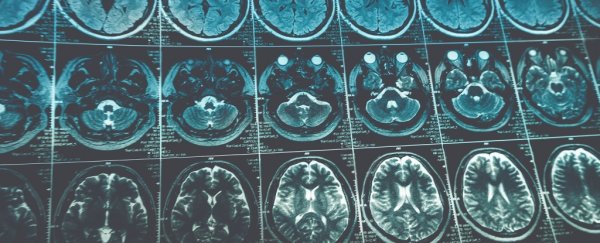A study attempting to show that viruses could be delivered to brain tumours has delivered that and more.
Not only did the virus in question reach its target, it also stimulated the patient's own immune system - which then also attacked the tumour.
Preclinical experiments in mice, followed by window-of-opportunity trials in nine human patients, showed that the naturally occurring virus offers potential for a new type of cancer therapy that could be used alongside other treatments.
The virus they used is one that has previously shown potential for cancer treatment - what is known as an oncolytic virus.
It's called mammalian orthoreovirus type 3, from the reovirus family, and it has previously been shown to kill tumour cells, but leave healthy cells alone.
Previous experiments have demonstrated this mechanism, but researchers from the University of Leeds are the first to successfully direct it at brain tumours.
This is because, until now, it was thought unlikely that the reovirus would be able to cross the blood-brain barrier, a membrane that protects the brain from pathogens.
"This is the first time it has been shown that a therapeutic virus is able to pass through the brain-blood barrier, and that opens up the possibility this type of immunotherapy could be used to treat more people with aggressive brain cancers," co-lead author Adel Samson said.
Nine patients were selected to be injected with the virus via a single-dose intravenous drip. All either had brain tumours that had spread to other parts of the body, or fast-growing gliomas - a type of brain tumour that is difficult to treat and has a poor prognosis.
All were scheduled to have their brain tumours surgically removed in a matter of days following the reovirus experiment.
The researchers took samples from their tumours after they had been removed, and compared to the tumours of patients who had had brain surgery, but not the reovirus treatment beforehand.
The researchers found the virus in the tumour samples of the trial patients, clearly showing that the virus has been able to reach the cancer.
But they also found an elevated level of interferons, the proteins that activate our immune system. The team says that these interferons were attracting white blood cells to the site to fight the tumour.
"Our immune systems aren't very good at 'seeing' cancers - partly because cancer cells look like our body's own cells, and partly because cancers are good at telling immune cells to turn a blind eye. But the immune system is very good at seeing viruses," said co-lead author Alan Melcher.
"In our study, we were able to show that reovirus could infect cancer cells in the brain. And, importantly, brain tumours infected with reovirus became much more visible to the immune system."
These findings are already being applied in a clinical trial, where patients are being given the reovirus treatment in addition to chemotherapy and radiotherapy. One patient's treatment is already underway - he is being given 16 doses of the reovirus to treat his glioblastoma.
The reason he is being given multiple doses is because of the way the virus activates the immune system. This clinical trial will determine how well cancer patients can tolerate the treatment, since the virus creates flu-like side effects, and whether it makes the standard treatments more effective.
"The presence of cancer in the brain dampens the body's own immune system. The presence of the reovirus counteracts this and stimulates the defence system into action," said one of the researchers, oncologist Susan Short, who is also leading the clinical trial.
"Our hope is that the additional effect of the virus on enhancing the body's immune response to the tumour will increase the amount of tumour cells that are killed by the standard treatment, radiotherapy and chemotherapy."
The research has been published in the journal Science Translational Medicine.
